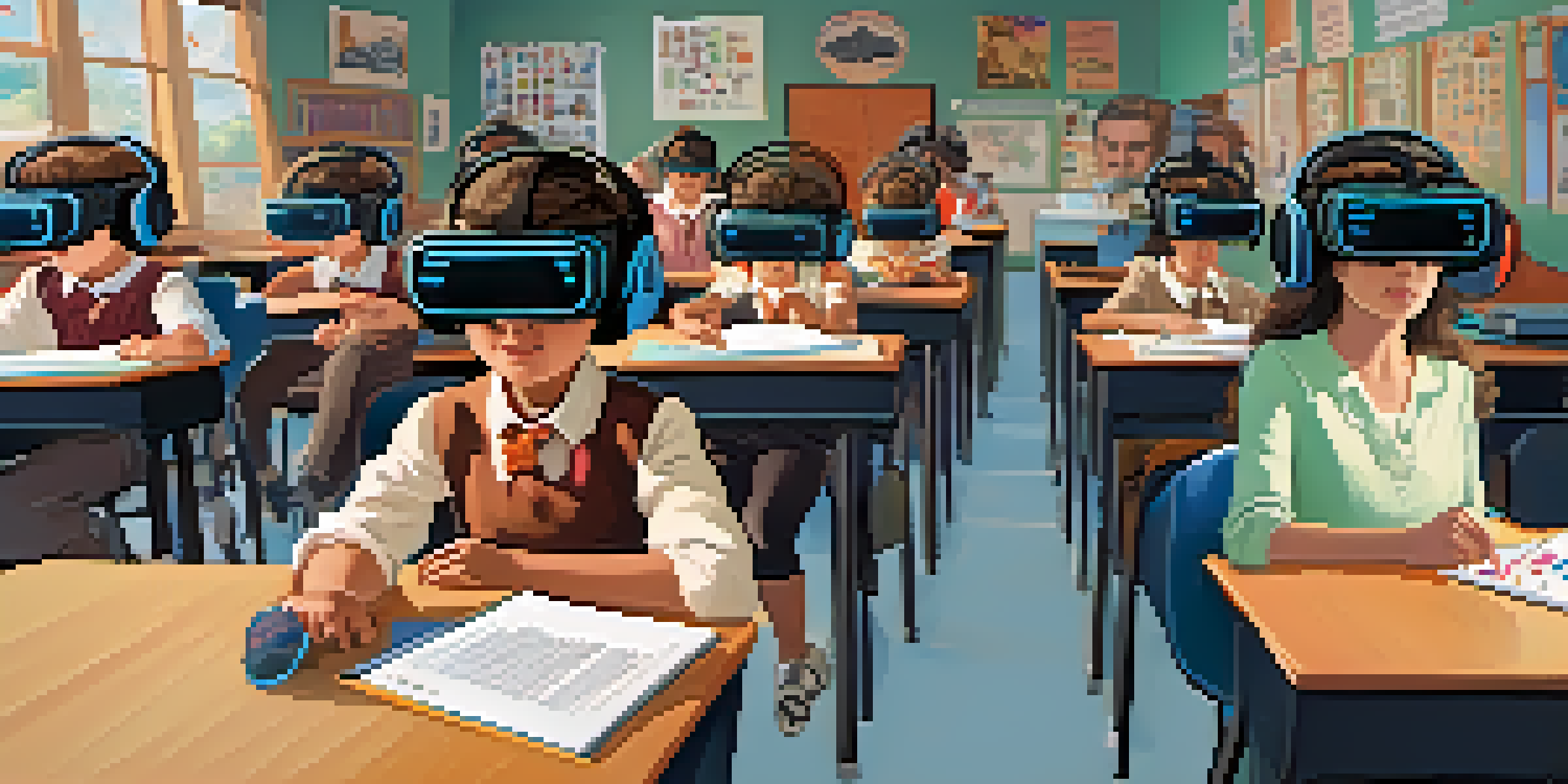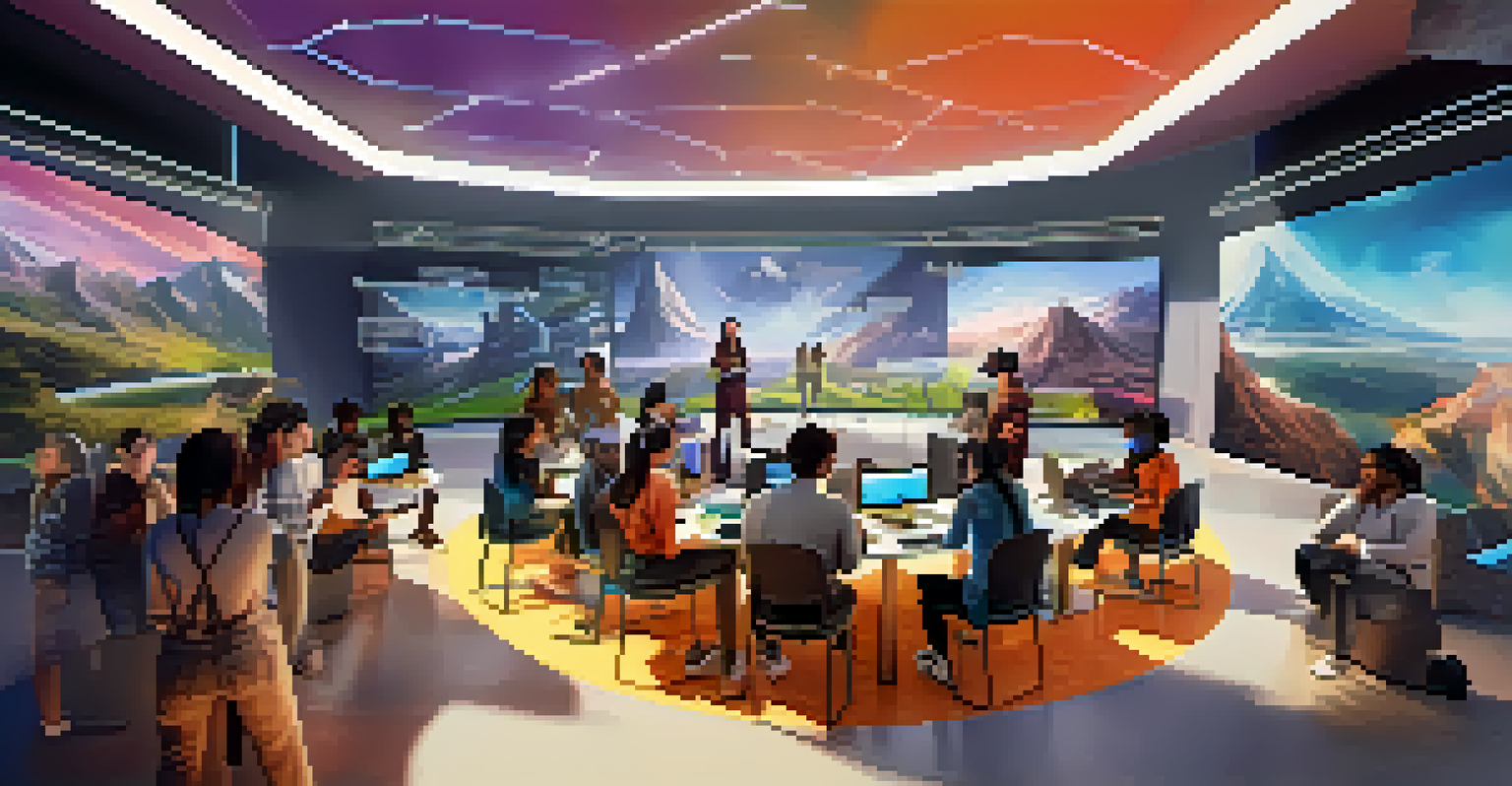How VR Can Enhance Critical Literacy Skills in Education

Understanding Critical Literacy in the Classroom
Critical literacy involves analyzing and evaluating texts to understand deeper meanings and perspectives. It's not just about reading words; it's about questioning the context, motives, and biases present in the material. This skill is essential for students to navigate the vast amounts of information they encounter daily.
Literacy is not only about reading and writing; it is about understanding and engaging with the world around us.
By fostering critical literacy, educators empower students to think critically about what they read and consume. This can lead to more informed citizens who can engage in thoughtful discussions and challenge the status quo. As education evolves, integrating modern tools like virtual reality (VR) can enhance these skills in exciting ways.
Using VR in the classroom provides a unique immersive experience that allows students to step into different narratives and viewpoints. This can help them understand diverse perspectives and develop a more nuanced understanding of texts.
The Role of VR in Engaging Students
One of the biggest challenges in education is keeping students engaged. Traditional teaching methods can sometimes fall flat, especially for digital natives who thrive in interactive environments. VR offers a dynamic solution by transforming lessons into vivid, interactive experiences that capture students' attention.

Imagine a student exploring ancient civilizations or walking through a historical event in real-time. This immersive experience can spark curiosity and encourage students to ask questions, driving further exploration and discussion. Such engagement is vital for developing critical literacy skills.
Critical Literacy Enhances Understanding
Critical literacy empowers students to analyze texts deeply, considering context and biases.
Moreover, VR can tailor experiences to different learning styles, providing visual and kinesthetic learners with the tools they need to thrive. By making learning interactive, students are more likely to invest in the material and develop critical thinking skills.
Experiential Learning Through VR
Experiential learning is all about learning by doing, and VR takes this concept to the next level. Students can practice critical literacy skills by engaging with scenarios that require analysis and reflection. For example, they might explore a fictional world while evaluating the motives of different characters.
The future belongs to those who prepare for it today.
This hands-on approach allows learners to apply their knowledge in real-time, making connections to the material that they may not have grasped through traditional methods. It creates a safe space for them to experiment with their ideas and challenge their assumptions.
As they navigate these virtual experiences, students sharpen their ability to dissect narratives, understand biases, and question underlying messages—all crucial components of critical literacy.
Fostering Empathy and Perspective-Taking
One powerful aspect of VR is its ability to foster empathy. When students step into another person’s shoes—whether a historical figure or a character from a story—they can experience life from a new perspective. This helps them develop a deeper understanding of various viewpoints and the contexts that shape them.
Empathy is a vital component of critical literacy, as it encourages students to consider different angles before forming opinions. By understanding the motivations and struggles of others, students can critique texts with a more open mind, leading to richer discussions.
VR Engages Students Effectively
Virtual reality transforms traditional learning into interactive experiences, capturing students' attention and sparking curiosity.
Additionally, these experiences can humanize complex issues, making them more relatable. This connection can inspire students to engage with the material on a more profound level, ultimately enhancing their critical literacy skills.
Collaborative Learning Opportunities in VR
Collaboration is a cornerstone of effective learning, and VR can facilitate teamwork in innovative ways. Virtual environments allow students to work together on projects, discussing ideas and sharing insights in real-time. This dynamic interaction promotes critical thinking and literacy as they collectively analyze information.
For instance, students can embark on a virtual quest that requires them to solve problems or complete tasks, fostering communication and collaboration. They learn to articulate their thoughts, listen to others, and respect diverse opinions, all of which are vital for critical literacy.
Through collaborative VR experiences, students also develop skills such as negotiation and compromise, further enhancing their ability to engage critically with texts and discussions.
Assessment and Feedback in VR Learning
Assessing critical literacy skills can be challenging, but VR offers unique opportunities for evaluation. Educators can create scenarios that require students to demonstrate their understanding and analysis of various texts. This approach allows for more authentic assessments than traditional tests might provide.
By observing students as they navigate virtual environments, teachers can gain insights into their critical thinking processes and areas that need improvement. Immediate feedback can be provided within the VR experience, helping students refine their skills on the spot.
Empathy Through VR Experiences
VR fosters empathy by allowing students to experience diverse perspectives, enhancing their critical literacy skills.
This form of assessment not only makes learning more engaging but also encourages students to reflect on their understanding and growth. It shifts the focus from rote memorization to meaningful learning.
Future Implications of VR in Education
As technology continues to evolve, the potential for VR in education is immense. The integration of VR into curriculum design can revolutionize how critical literacy is taught and learned. It opens doors for innovative approaches to learning that can adapt to the needs of diverse learners.
Looking ahead, we may see VR being used to create comprehensive literacy programs that blend traditional reading and writing with immersive experiences. This could lead to a generation of learners who are not only proficient in literacy but also skilled in critical analysis and empathy.

The future of education is about embracing technology to create well-rounded individuals who can navigate the complexities of the world. VR is a powerful tool in this journey, making literacy education more relevant and impactful.